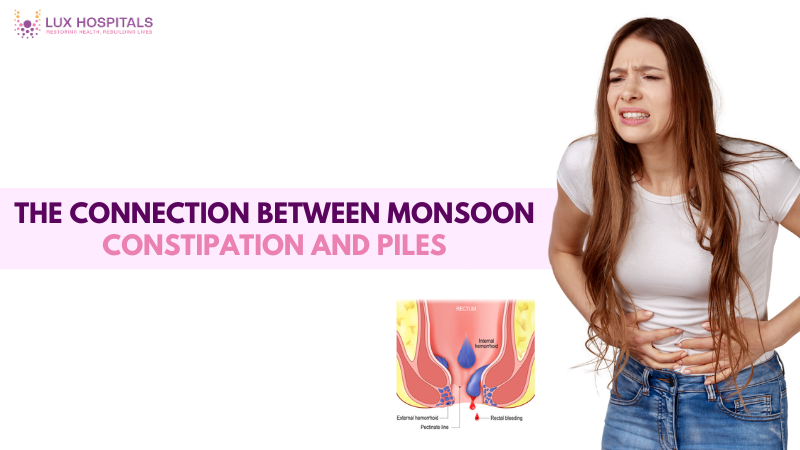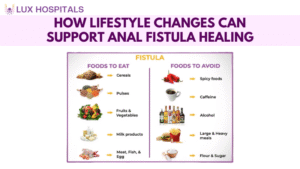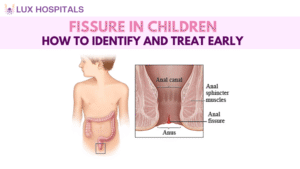The Connection Between Monsoon Constipation and Piles

The rainy season affects digestion and intestinal health, while also providing respite from the heat. During this time, piles and constipation are prevalent conditions that are closely related. During the monsoon months, dehydration, dietary changes, and a decrease in physical activity often slow down digestion. Constipation and piles result from this slow bowel movement, which is uncomfortable and makes daily living challenging. Being aware of this link can aid in the prevention and efficient treatment of certain illnesses.
Why Monsoon Triggers Constipation
Constipation is one of the most common digestive issues during the monsoon. The body’s metabolism slows down, and irregular eating patterns affect bowel regularity. Additionally, people tend to drink less water in cooler weather, which can lead to harder stools.
- Sluggish digestion: Reduced sunlight and lower metabolism slow the digestive process.
- Dehydration: Lower water intake can cause hard stools and difficulty passing them.
- Low fibre intake: During the monsoon, people tend to prefer fried snacks, which reduces their intake of fresh fruits and vegetables.
When left untreated, constipation and piles often go hand-in-hand, as constant straining increases pressure on rectal veins.
How Constipation Leads to Piles
Piles, also called haemorrhoids, occur when the blood vessels around the rectum swell due to increased pressure. Persistent constipation and piles are directly linked, as hard stools and straining damage delicate tissues.
- Increased straining: Constipation forces people to exert more effort during bowel movements.
- Swelling in veins: Pressure causes the veins in the rectal area to swell and bulge.
- Chronic irritation: Continuous constipation exacerbates haemorrhoids, leading to pain, bleeding, and itching.
Thus, untreated constipation and piles can create a cycle where one worsens the other.
Symptoms of Constipation and Piles
Recognising the early signs of constipation and piles is essential for timely treatment.
- Constipation symptoms: Infrequent bowel movements, hard stools, bloating, and abdominal discomfort.
- Piles symptoms: Bleeding during bowel movements, itching, pain, swelling, and a lump near the anus.
- Combined impact: When constipation persists, piles worsen, leading to chronic pain and difficulty in sitting or passing stools.
These symptoms demonstrate the close relationship between piles and constipation and highlight the need for lifestyle changes.
Lifestyle Causes During Monsoon
Several lifestyle factors cause constipation and piles during the monsoon season:
- Dietary changes: People eat more oily, spicy, and fried foods during rainy months.
- Lack of exercise: Rainy weather reduces outdoor activity, which can affect digestion.
- Poor hydration: Cooler temperatures make people feel less thirsty.
- Infections: The monsoon increases the risk of stomach infections, which can disrupt bowel movements.
These habits increase the chances of developing constipation and piles, especially in people with weak digestion.
Natural Remedies for Constipation and Piles
Simple solutions can be used to manage piles and constipation during the monsoon naturally:
- Increase fibre intake by eating fruits, vegetables, and whole grains to help soften stools.
- Stay hydrated: Drink warm water, herbal teas, and soups to aid digestion.
- Regular exercise, such as indoor yoga and light stretches, helps improve bowel movements.
- Warm baths: Sitz baths can help relieve discomfort associated with haemorrhoids.
These remedies help reduce the severity of constipation and haemorrhoids, and prevent their recurrence.
Medical Treatment for Constipation and Piles
Sometimes, natural remedies are not enough, and medical care is needed for constipation and piles.
- For constipation, Doctors may prescribe laxatives, stool softeners, or probiotics to regulate bowel movements.
- For piles, treatment may include ointments and pain relievers. Alternatively, in extreme circumstances, surgical techniques like hemorrhoidectomy may be used.
- Long-term care: Preventing constipation is key to avoiding piles in the future.
Accurate diagnosis is essential for treating constipation and piles.
Prevention Tips During Monsoon
Preventing constipation and piles requires mindful lifestyle habits, especially during the rainy season:
- Eat freshly cooked, light, and fibre-rich meals.
- Avoid excessive fried and spicy foods, as they can slow down digestion.
- Even if you don’t feel thirsty, you should drink eight to ten glasses of water every day.
- Practice yoga poses like Pawanmuktasana to aid bowel movement.
These preventive steps reduce the likelihood of constipation and haemorrhoids, promoting healthy digestion.
Conclusion
The ideal environment for these disorders to co-occur is one characterised by decreased hydration, poor nutrition, and inactivity. You can successfully manage constipation and haemorrhoids and enjoy the monsoon without experiencing any discomfort by adopting mindful lifestyle choices and getting treatment as soon as possible. By making conscious lifestyle choices and seeking timely treatment, you can effectively manage constipation and haemorrhoids, and enjoy the monsoon without discomfort.




















